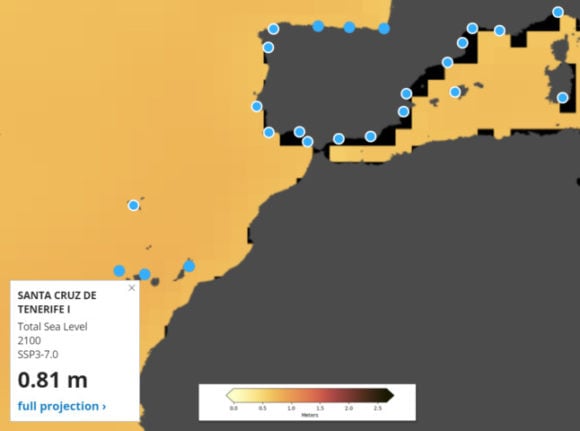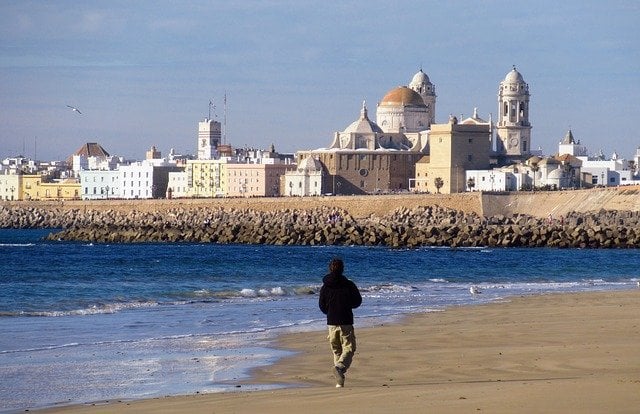The sixth report by the Intergovernmental Panel on Climate Change (IPCC) has sent shockwaves around the world, with the widespread and intensifying effects of climate change on the planet deemed “irreversible” and humans singled out as the only guilty party.
Spain and the Mediterranean are expected to be one of the most affected areas by climate change in the decades to come as increased desertification, longer droughts and insufferable temperatures become a mainstay in mainland Spain and its islands.
One of the consequences of global warming which will have the biggest impact on the Spanish territory is rising sea levels, as evidenced by a new map published by NASA in tandem with the IPCC report.
Rising sea levels have been recorded since the early 20th century, with the average global rise from 1900 to 2016 estimated to have been between 16 and 21 cm.
But this rate is intensifying and many villages, towns and cities along the 8,000 kilometres that make up the Spanish coastline face having to adapt to a sea level at least half a metre higher by the year 2100.
As showcased in the interactive map which can be accessed here, Santa Cruz de Tenerife in the Canary Islands is expected to experience a +81centimetre sea level rise in the next 80 years, the highest in Spain.

Cadiz (+75cm) and Barcelona (+75cm) will also be negatively impacted, with the Catalan capital’s much-loved beaches losing an estimated 6 to 10 metres of sand per year already.
READ ALSO: Why are Barcelona’s beaches disappearing?
Other cities across the Spanish territory which NASA has reported will see their beaches and coastline threatened in the next decades include Valencia (+71cm sea rise level), Málaga (+61cm), Almería (+60cm), Alicante (+58cm), Palma de Mallorca (+66cm), Santander (+72cm), Gijón (+66cm), A Coruña (+73cm) and Vigo (+71cm).
Nasa’s projections are based primarily on data collected by satellites and instruments on the ground, as well as computer analysis and simulations.
According to the IPCC, a low-emissions future could help reverse some of these increases, but coastal planning which factors in the destructive nature of rising sea levels on cities, beaches, agriculture and areas of wild coastline will have to be on the long-term agenda of many municipalities across Spain.
Rising sea levels also influence land erosion, the intensity of storms and other extreme meteorological events such as storm surges, a tsunami-like phenomenon of rising water associated with low-pressure weather systems.
Some of Spain’s most important protected natural areas – the Ebro Delta or Doñana National Park – are also at risk of subsidence, which occurs when the ground sinks due to the weight of the sediments, tectonic causes, or compacted oil or water extractions. Couple subsidence with rising sea levels, and the impact on the environment can be far greater.
Spain’s current Coastal Law came into force in 2013 promising protection and sustainable use of the coastline. However, in many cases it had the adverse effect of easing the levels of protection of the country’s seafront in favour of residential properties and economic activities.
By reducing the protection perimeter from 100 metres to 20 metres with respect to the previous rule, thousands of houses built illegally on public land became legitimised, and thousands more benefitted from construction amnesty.
The result is a considerably built-up coastline which in 2018 was home to more than 60 percent of the Spanish population (Greenpeace stats).



 Please whitelist us to continue reading.
Please whitelist us to continue reading.
Member comments